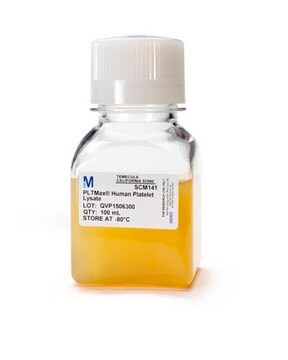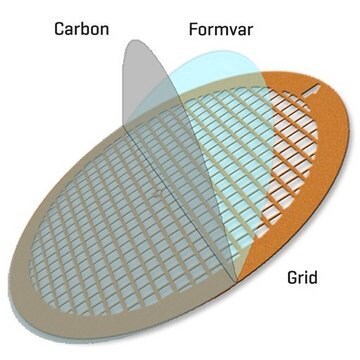AB3200
Anti-LIM-1 Antibody
Chemicon®, from rabbit
Sinônimo(s):
Anti-Anti-LIM-1, Anti-Anti-LIM1
About This Item
Produtos recomendados
fonte biológica
rabbit
Nível de qualidade
forma do anticorpo
purified immunoglobulin
tipo de produto de anticorpo
primary antibodies
clone
polyclonal
reatividade de espécies
human, frog, fish, mouse
fabricante/nome comercial
Chemicon®
técnica(s)
immunocytochemistry: suitable
immunofluorescence: suitable
immunohistochemistry: suitable (paraffin)
immunoprecipitation (IP): suitable
western blot: suitable
nº de adesão NCBI
nº de adesão UniProt
Condições de expedição
wet ice
modificação pós-traducional do alvo
unmodified
Informações sobre genes
human ... LHX1(3975)
Especificidade
Imunogênio
Aplicação
Our photo was produced from immersion fixation of chicken embryos in cold 4% PFA for 15-30 minutes, then sectioning was performed on a cryostat.
Works on paraffin embedded sections when sections are either lightly PFA fixed or fixed with acetone, ethanol or fixative suggested below.
SUGGESTED IMMUNOHISTOCHEMISTRY PROTOCOL FOR AB3200
The best fixative is MEMFA. 10X stock solution for MEMFA: 1 M MOPS, 20 MM EGTA. 10 mM MgSO4, 38% Formaldehyde. Fixation 1 hour, 2 x 15 min methanol. Following this protocol embryos may be stored in methanol at -20°C indefinitely or immediately embedded in paraplast. Best results on paraffin sections 6-10 micron thick.2) Staining following deparaffinization in xylene and a row of alcohol wash two times in water. Block in 2% Boehringer Mannheim reagent in 0.1 M maleic acid, pH 7.5, 150 mM NaCl for one hour at room temperature.3) Dilute the AB3200 in same blocking reagent and incubate overnight at 4°C or for at least 5 hours. Wash three times in PBS, 10 min each.4) Incubate with alkaline phosphatase conjugated secondary antibody (for example Chemicon Catalog Number AP132A. Develop with BCIP/TNBT (Chemicon Catalog Number ES007-100ML).5) For sections always use Digene silanated slides or Superfrost plus from Fisher as some times you may need to boil sections in 6 M urea for 5-6 min. in microwave at 80% power following deparaffinization to increase signal. That is especially useful if tissues were fixed in PFA.6) Sometimes it is necessary to predeplete antibody on hyperfixed embryos to lower background (especially for staining species other than frog and for whole-mounts). Procedure: hyperfix frog or fish embryos in MEMFA for 36-48 hours at RT 30-50 embryos. Wash 2 X in methanol (see above). Apply antibody in final dilution in blocking reagent for one hour on rocking table. Collect super and apply to your embryos or sections. For whole mounts use the following procedure: after fixation, methanol and PBS; block in PBST + serum (PBS + 2 mg/mL BSA + 0.1% Triton X100 + 10% animal serum) one hour room temperature. Add first antibody in PBST + serum and incubate over night at 4°C. Wash in PBST (no serum) 4 times for 2 hours. Add secondary diluted in PBST + serum over night at 4°C. Wash in PBST four times for 2 hours. Develop staining.
Do not use tissues fixed overnight in PFA the antibody will not work.
Immunocytochemistry: 1:500 on P19 cell line, lightly fixed (2% PFA) 5-15 minutes, permeabilized with 0.1% triton X-100 or methanol ( 5′ air dry).
Western blot: 1:3,000-1:6,000
Immunoprecipitation: 1:200
Immunofluorescence 1:100
Optimal working dilutions must be determined by the end user.
Neuroscience
Developmental Neuroscience
Neuronal & Glial Markers
forma física
Armazenamento e estabilidade
Informações legais
Exoneração de responsabilidade
Não está encontrando o produto certo?
Experimente o nosso Ferramenta de seleção de produtos.
Código de classe de armazenamento
10 - Combustible liquids
Classe de risco de água (WGK)
WGK 2
Ponto de fulgor (°F)
Not applicable
Ponto de fulgor (°C)
Not applicable
Certificados de análise (COA)
Busque Certificados de análise (COA) digitando o Número do Lote do produto. Os números de lote e remessa podem ser encontrados no rótulo de um produto após a palavra “Lot” ou “Batch”.
Já possui este produto?
Encontre a documentação dos produtos que você adquiriu recentemente na biblioteca de documentos.
Nossa equipe de cientistas tem experiência em todas as áreas de pesquisa, incluindo Life Sciences, ciência de materiais, síntese química, cromatografia, química analítica e muitas outras.
Entre em contato com a assistência técnica








